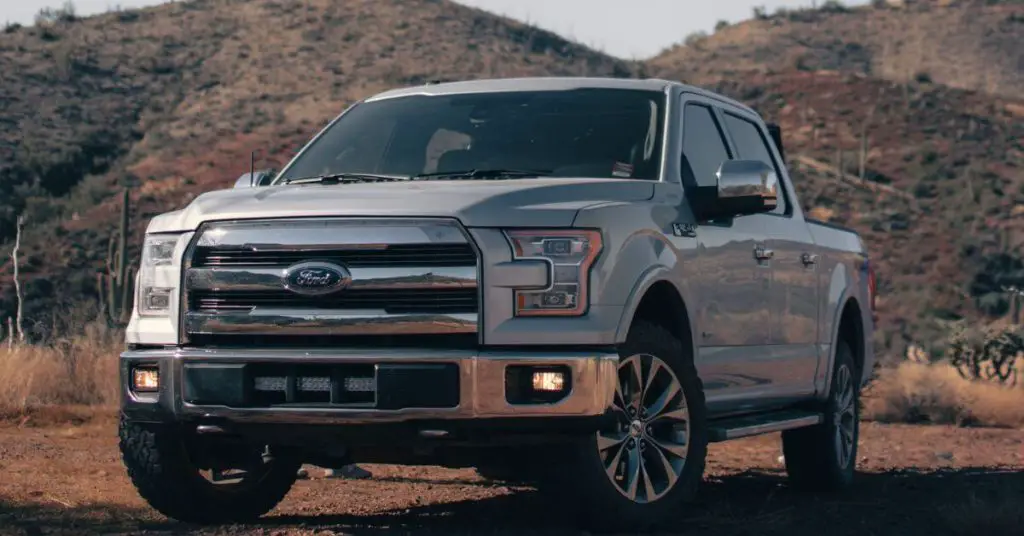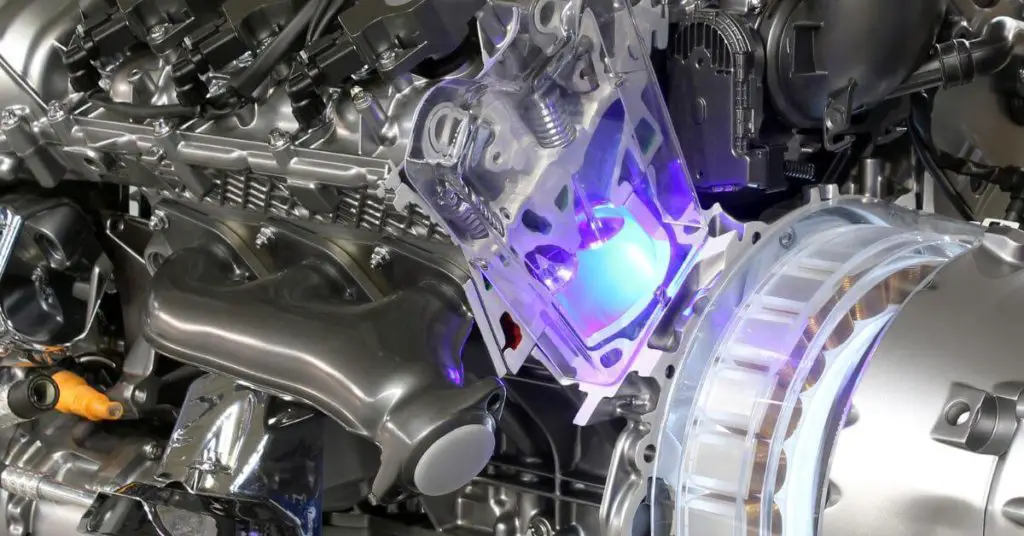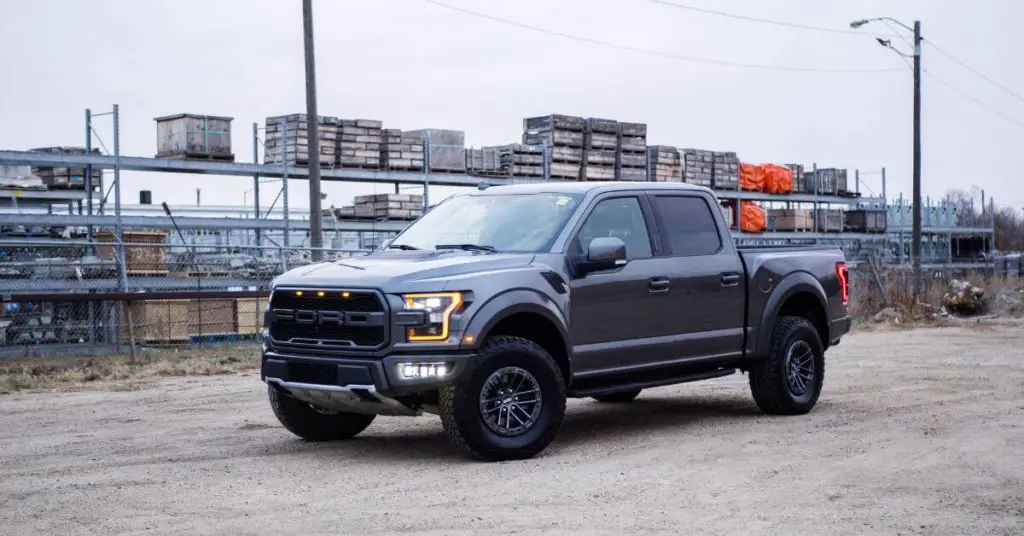Have you noticed that the words power boost and power stroke are popping up more and more in the automotive industry? It’s no surprise that these two different technologies offer potent benefits for Ford’s trucks.
This blog post will discuss the differences between Power boost vs Power stroke and how they affect your truck’s performance.

A Powerboost is a system that compresses air rapidly, allowing for more fuel to be burned and increased overall power output.
On the other hand, Power stroke technology increases the compression ratio in diesel engines, creating significantly more torque per unit volume for pulling heavy loads or climbing hills with greater speed.
Both technologies provide significant benefits depending on your application or budget, but it’s essential to understand the pros and cons of each before making a decision.
Table of Contents
So Let’s Take A Look At Ford And Their Powertrains
PowerBoost Engine Overview
Ford’s PowerBoost Hybrid engine combines the benefits of traditional gasoline engines with that of an electric motor.
By combining both sources of power, Ford’s powerboost hybrid engine increases fuel economy and offers improved performance.

The electric motors assist the internal combustion engine during acceleration, while regenerative braking captures and stores kinetic energy to help recharge the battery.
You might also like to know What’s Best Pickup Truck Bed Accessories.
This advanced technology helps save on fuel costs and helps reduce emissions as well.
The PowerBoost Hybrid system patented by Ford Motor Company includes four technologies: direct fuel injection, turbocharging, cylinder deactivation, and twin independent variable camshaft timing (Ti-VCT).
These features all work together to create a powerful engine with higher fuel efficiency and better emissions than traditional gas engines.
Additionally, the PowerBoost hybrid technology helps reduce noise and vibration levels in Ford vehicles for a smooth driving experience.
How Hybrid Gas Engine Works?
The hybrid system comprises two or more power sources, which can be used separately and simultaneously.
By running on battery power alone when optimum efficiency is needed, the gas engine can consume less fuel than it otherwise would.
During higher-load situations, such as heavy acceleration, the electric motor assists the gasoline engine by providing additional power while capturing and storing kinetic energy to help recharge the battery.
Ford Powerboost Engine vs. Ford Ecoboost Engine
Word of explanation before we move any further.
Since Ford’s most popular vehicle is a Ford F 150, the versatile and dependable pickup truck has been a leader in its class for many years.
It’s offered in several trims, ranging from the basic XL to the luxurious Limited trim.

The variety of trims further expands with several popular packages that offer additional features and customization options.
In terms of engine options, the F-150 can be equipped with anything from a 2.7L V6 Ecoboost, 3.3L V6, 3.5L V6 Ecoboost, 3.5L Powerboost Full Hybrid V6, 5.0 V8 (for maximum towing capacity) all the way to high-output 3.5L Twin-turbo V6 with 450 horsepower in Ford F150 Raptor.
Now, many people need clarification with those new engine’s names.
- The Ford Powerstroke is a diesel option.
- The Ford PowerBoost engine is a hybrid powertrain system that combines the benefits of a traditional gasoline engine with those of an electric motor.
- The Ford EcoBoost engine is a turbocharged gasoline direct injection (GDI) system that utilizes advanced technology to deliver excellent performance and impressive fuel efficiency.
Pros And Cons of Having A Hybrid Vehicle
Like everything in life, hybrid vehicles have advantages and disadvantages; let us explore them more closely.
General Pros Of Having A Hybrid Vehicle
Hybrid vehicles offer a variety of benefits for drivers.
- The most apparent benefit is fuel economy, which can be dramatically better than standard gasoline-powered vehicles.
- Hybrids also emit less harmful emissions, making them a more environmentally friendly option.
- They often provide improved performance compared to conventional gasoline engines and require less maintenance over the long term.
- Additionally, hybrid cars are eligible for tax credits in many states and countries, providing additional monetary savings for owners.
With so many advantages, hybrids can be an excellent choice for those looking to reduce their environmental footprint and save money on transportation costs.
General Cons Of Having A Hybrid Vehicle
While the advantages of owning a hybrid vehicle are numerous, there are some drawbacks.
- While potentially offset by tax credits, the initial cost can be high compared to conventional cars.
- Additionally, many hybrids have lower resale values than their gasoline-powered counterparts.
- Hybrid batteries may need to be replaced after several years of use, which can add additional costs.
- Finally, as hybrid technology is still relatively new and rapidly evolving, parts and repairs may often require specialist knowledge or equipment, making them more expensive than standard vehicles.
Pros Of Hybrid PowerBoost (Versus A PowerStroke Diesel Engine)
The Hybrid PowerBoost option (HPB) is an excellent alternative to engines like Ford’s 6.7L Power Stroke diesel engine.
- HPB combines the efficiency of a gasoline engine with the power of a light-duty diesel truck, allowing for enhanced fuel economy and better acceleration.
- Moreover, this technology offers lower emissions compared to its predecessor, reducing the negative impact on the environment.
- The engine is low maintenance and does not require expensive filter changes or other costly repairs associated with diesel.
- In addition, the Hybrid PowerBoost engine delivers more horsepower and torque than an equivalent displacement PowerStroke engine, meaning improved performance from your vehicle.
Cons Of Hybrid PowerBoost (Versus A PowerStroke Diesel Engine)
Compared to a traditional Powerstroke diesel engine, Hybrid PowerBoost technology has some drawbacks.
- Firstly, the initial cost of a Hybrid PowerBoost engine is significantly higher than purchasing a standard gasoline-powered vehicle.
- Additionally, the complexity of this type of engine may require specialized knowledge or equipment for maintenance and repairs, which can lead to higher repair costs over time.
- Finally, hybrid vehicles typically need higher resale values due to their limited appeal in the used car market.
The Most Popular Ford F150 3.5 PowerBoost
The Ford F-150 3.5L PowerBoost is a powerful full-size pickup truck that packs a punch, combining traditional gasoline power with hybrid technology in one powerful package.
The hybrid system includes a turbocharged V6 engine and electric motor that generate up to 430 horsepower and 570 pound-feet of torque for tremendous power and exceptional acceleration.
While achieving a fuel economy of 25 mpg combined. In addition to its exceptional performance, this engine features advanced technology that helps reduce emissions and optimize performance.
For instance, the Twin Independent Variable Cam Timing (TiVCT) system ensures optimum efficiency at every stage of engine operation for ultimate control.
The PowerBoost engine also offers Auto Start/Stop technology which shuts off the engine when stopped in traffic or other idle situations to save fuel.
With all these features working together, Ford’s F-150 3.5L PowerBoost Engine perfectly balances power and efficiency.
PowerStroke Engine Overview
Power stroke technology is typically found in diesel engines.
It works by increasing the compression ratio within an engine to produce more power without increasing fuel consumption – something that isn’t possible with traditional combustion engines.

The PowerStroke engine is a line of high-performance diesel engines produced by Ford Motor Company.
It is available in Ford’s F-Series pickup trucks, E-Series vans, Excursion SUVs, and heavy-duty Super Duty pickups.
The PowerStroke lineup consists of various diesel engines ranging from 3.0L to 6.7L in displacement.
The most common engine version is the 6.7L V8, which boasts impressive power ratings of up to 475 horsepower and 1050 lb-ft of torque – making it one of the most potent stock diesel engines available on the market.
The durable design and advanced technology this motor use ensure maximum efficiency without sacrificing power or reliability, allowing it to work hard for many years.
That makes it ideal for applications such as towing, hauling, and recreational activities.
Since diesel expends its energy from combustion rather than from mechanical force generated by pistons, they tend to generate significantly more torque per unit volume than gasoline engines—hence “power stroke.”
How Does a Diesel Engine Work?
Types of diesel are efficient and powerful internal combustion engine that compresses a fuel-air mixture before igniting it.
This compression process causes the temperature and pressure in the combustion chamber to rise, resulting in a very high-energy release that drives the mechanical components.
Diesel operates using four main strokes: intake, compression, power, and exhaust.
During the intake stroke, the air is drawn into the cylinder through an intake valves.
This air-fuel mixture is compressed during the compression stroke, causing heat to form from adiabatic compression.
As the piston reaches its peak position during the power stroke, fuel is injected into the hot compressed air causing it to ignite without requiring a spark.
Finally, spent gases are removed from the cylinder via exhaust valves during the exhaust stroke.
Modern advancements such as direct injection and variable geometry turbochargers make these diesels even more efficient while reducing emissions significantly.
Pros and Cons Of Having A Diesel Engine
Like with Ford PowerBoost engines, there are pros and cons with diesel engines.
Diesel motors offer superior fuel economy and longevity but have a more expensive price tag.
They typically generate more noise, smoke, and odor than gas-powered vehicles and require regular maintenance of the diesel particulate filter to ensure proper performance and reduce air pollution from the exhaust.
Let’s break it down.
Pros of a PowerStroke Diesel Engine (Versus A PowerBoost)
The Ford Powerstroke diesel engine offers superior power, torque, and fuel economy compared to the PowerBoost.
The enhanced performance capabilities of the PowerStroke come from its advanced turbocharging technology, which allows it to generate large amounts of power while remaining efficient.
Additionally, these engines provide excellent torque for heavy-duty hauling and towing applications, allowing them to handle larger payloads more easily.
Finally, a PowerStroke diesel is more reliable than the PowerBoost and requires less maintenance to maintain peak performance.
With regular maintenance and care, diesel can outlast its gasoline counterparts by several years.
Cons Of A PowerStroke Diesel Engine (Versus A PowerBoost)
While a PowerStroke Diesel offers increased efficiency and longevity compared to a PowerBoost, they also come with certain drawbacks.
The cons of a PowerStroke Diesel versus a PowerBoost include higher upfront costs and more frequent maintenance.
The lubricants necessary for diesels are more expensive, and the engine produces more noise, smoke, and odor than its gasoline counterpart.
Further, oil changes may need to be conducted more often than with gasoline engines if not correctly maintained.
Finally, diesel fuel tends to be more expensive than regular gas.
All these can be costly in both time and money for consumers and should be considered when deciding between a PowerStroke Diesel or a PowerBoost.
Ford PowerStroke 3.0L Diesel
Let’s discuss our second topic today before we find out if we can choose a Powerboost over a Powerstroke – this engine will use the 3.0L turbocharged diesel engine used by the Ford.
It was the first-generation engine in the Ford engine class. Ford has created this engine for competition with a RAM 1500 V6 EcoDiesel.
This was a mistake. Ram EcoDiesel got better fuel economy than Ford F 150 3 liter PowerStroke engines.
The Ford F-150 has dropped its 3.0L PowerStroke Diesel engine option after several years of offering it as a powerful and economical alternative to gasoline options.

This high-performance diesel engine features direct fuel injection, variable geometry turbocharging, and an advanced cooling system that produces up to 250 horsepower torque output of 440 lb-ft while delivering impressive fuel economy for its class.
Despite the engine’s reliability and performance, Ford has discontinued this option for a 2021 Ford F 150 and beyond in favor of other engines, like 2.7 and 3.5L V6 options, brand new PowerBoost engine, and a “big boy” – 5.0L V8 Coyote.
Power Boost VS Power Stroke
Here we will try to compare Powerboost VS PowerStroke diesel engines and answer the question of which is better, mainly depending on your needs and expectations.
Are you looking for a vehicle that can tow heavy loads?
Look no further than the Ford F 150 PowerBoost – clear winner.
Its standard 3.5L EcoBoost engine has been turbocharged with an electric motor, generating a remarkable 570lb-ft of torque – more than enough to tow up to 12,000lbs!
Add in its improved fuel economy (about 700 miles! range on a single tank) and low emissions, and it’s clear why the PowerBoost F-150 is the ideal choice when you need to get the job done.
In contrast, the PowerStroke engine offers superior performance due to its advanced technology, such as direct fuel injection and variable geometry turbocharging.
Additionally, the PowerStroke engine has a more efficient cooling system that ensures optimal reliability and longevity.
Ultimately, both engines are great options for drivers looking for power, efficiency, and dependability, though the decision should be based on individual preferences.
What is the difference between EcoBoost and PowerBoost?
The main difference between Ford’s EcoBoost and PowerBoost systems is the presence of hybrid technology in the latter.
While the EcoBoost system is still powerful and efficient, it relies on traditional conventionally-powered engines.
In contrast, the PowerBoost combines a 3.0L turbocharged V6 engine and advanced direct injection technology to achieve greater performance and produce higher horsepower while reducing emissions.
The PowerBoost also has an integrated battery pack and electric motor, providing additional power and fuel efficiency benefits, making it one of Ford’s most fuel-efficient and eco-friendly engines ever.
Conclusion
No matter what type of vehicle you drive or what kind of performance you’re after, knowing the difference between Powerboost and Powerstroke could help you make an informed decision when shopping around for parts or services.
Both technologies can give your truck a significant performance boost while keeping your wallet happy!


